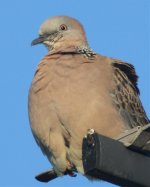thesilverloon
Member
Have just purchased a Canon 450D, 2ND Hand Borg ED76/ f6.6 (FL 500mm)Refractor and a Kenko 1.4 Pro 300 DGX Teleconverter. This is my first time using a DSLR.
Was wondering as to what camera settings best suit this combination? |=)|
Was wondering as to what camera settings best suit this combination? |=)|
Last edited:





